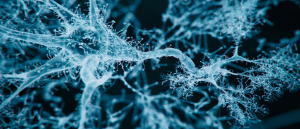
BioTechniques News
Beatrice Bowlby

An international team of researchers has discovered a fundamental protein in human fertilization, called MAIA, which could lead to an improved understanding of infertility.
For fertilization to be successful, the sperm and oocyte (an immature egg) need to recognize and bind to each other before fusing together. A study led by the Czech Academy of Sciences (Prague, Czech Republic) and the University of Sheffield (UK) has identified a new protein that is fundamental to the fusion process and could open doors to novel infertility treatments.
In more than half of those unable to conceive naturally, the cause of infertility is unknown. Lead investigator Harry Moore (University of Sheffield) explained, “what we know about fertility in humans has been severely limited by ethical concerns and the lack of eggs for research.”
In the first study of its kind, the researchers used an artificial fertilization technique to overcome these challenges. Using thousands of synthetic microbeads around the same size as a human oocyte, the researchers created artificial eggs with different peptides on their surfaces for the sperm to bind to.
The beads were incubated with sperm and, using an in vitro sperm binding assay, the researchers found that not all the beads had sperm attached to them.
 Cilia say what? Important function of neurons’ tiny hairs
Cilia say what? Important function of neurons’ tiny hairs
Researchers have uncovered a synapse on neurons’ tiny hair-like structures, which may facilitate long-term changes to genomic information in the nucleus.
Beads with sperm attached could be identified due to the light-refracting sperm heads and because they would rotate, caused by sperm motility. The researchers removed beads without a sperm mate until they were only left with sperm-bound beads. Less than one in 1,000 beads had sperm attached. They then identified the peptide on the surface of the remaining beads and named the corresponding protein MAIA, after the Greek goddess of motherhood.
After discovering MAIA, the researchers inserted the gene coding for the protein into human culture cells. These cells responded to sperm in the same way as in natural fertilization, revealing that MAIA plays a role in drawing the sperm to the egg cytoplasm and enabling the egg and sperm to fuse.
“The ingenious artificial fertilization technique which enabled us to identify the MAIA protein will not only allow scientists to better understand the mechanism of human fertility but will pave the way for novel ways to treat infertility and revolutionize the design of future contraceptives,” said Moore.
This discovery marks a step forward in our understanding of human fertilization. Allan Pacey (The University of Sheffield) concluded that, “it would have been impossible to discover [MAIA] without the use of artificial beads to replicate the surface of human eggs as we simply wouldn’t have been able to get enough eggs to do the experiment. A classic case of thinking out of the box.”
Next, the researchers will explore if sperm from different individuals bind to MAIA differently, as it has been theorized that some sperm may be incompatible with certain eggs.
The post Artificial fertilization reveals key protein in sperm–egg fusion appeared first on BioTechniques.
Full BioTechniques Article here
Powered by WPeMatico
